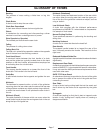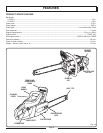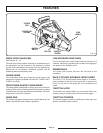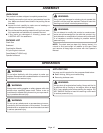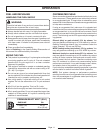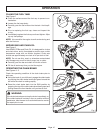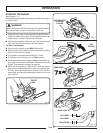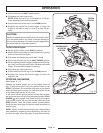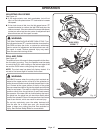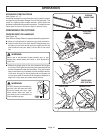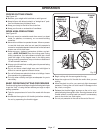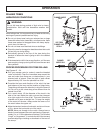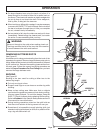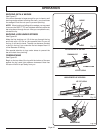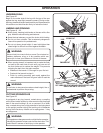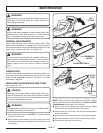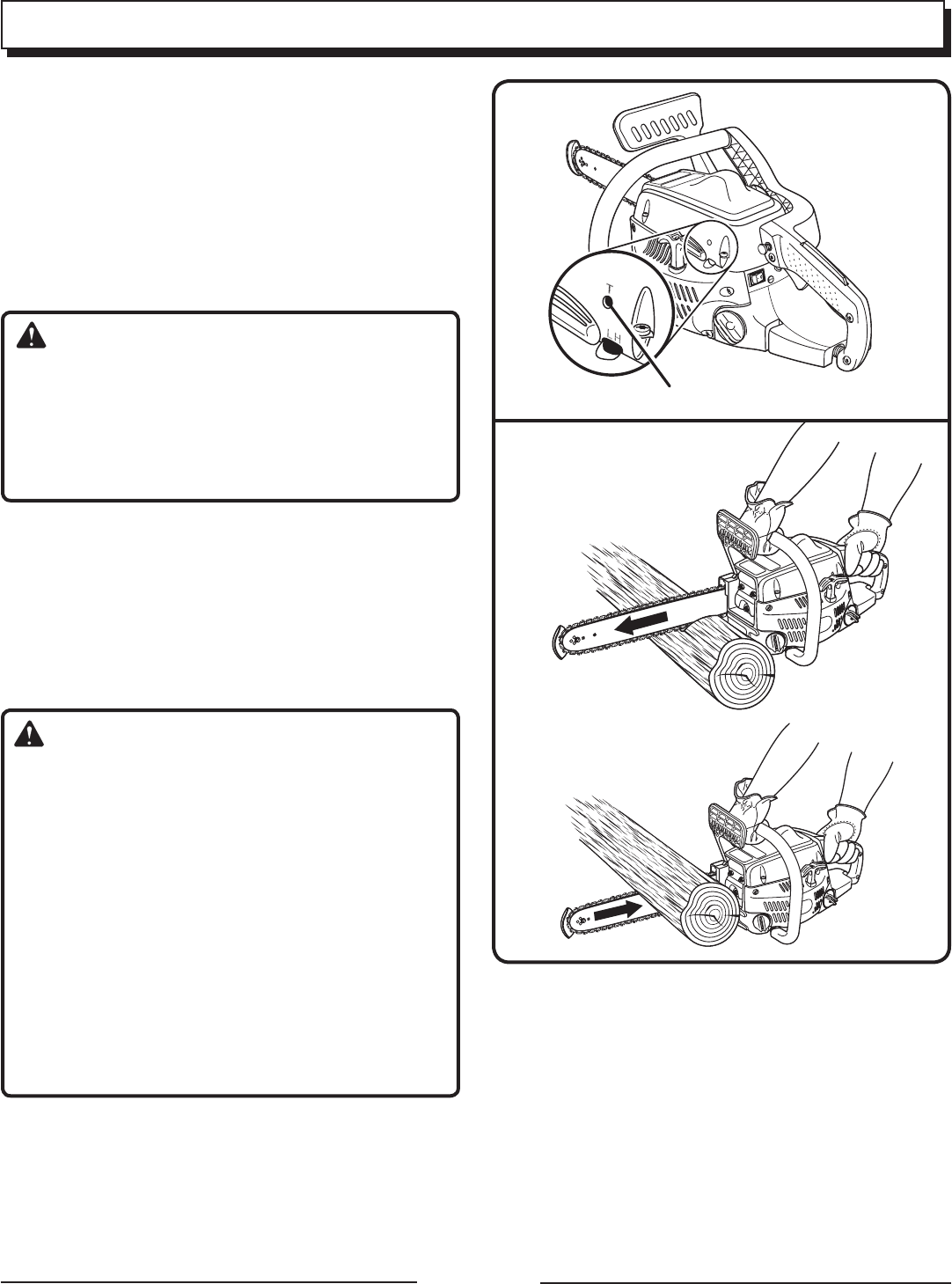
Page 15
ADJUSTING IDLE SPEED
See Figure 14.
If the engine starts, runs, and accelerates, but will not
idle, turn the idle speed screw “T” clockwise to increase
idle speed.
If the chain turns at idle, turn the idle speed screw “T”
counterclockwise to reduce the idle RPM and stop the
chain movement. If the saw chain still moves at idle speed,
contact an authorized service center for adjustment and
discontinue use until the repair is made.
WARNING:
THE SAW CHAIN SHOULD NEVER TURN AT IDLE. Turn
the idle speed screw “T” counterclockwise to reduce the
idle RPM and stop the chain, or contact an authorized
service center for adjustment and discontinue use until
the repair is made. Serious personal injury may result
from the saw chain turning at idle.
PULL AND PUSH
See Figure 15.
The reaction force of the saw is always opposite to the direc-
tion the chain is moving. Thus, the operator must be ready
to control the PULL when cutting on the bottom edge of the
bar and the PUSH when cutting along the top edge.
NOTE: The chain saw has been fully factory tested. It is
normal to find some slight oil residue on the saw.
WARNING:
KICKBACK occurs when the moving chain contacts an
object at the upper portion of the tip of the guide bar or
when the wood closes in and pinches the saw chain in the
cut. Contact at the upper portion of the tip of the guide
bar can cause the chain to dig into the object and stop the
chain for an instant. The result is a lightning-fast reverse
reaction which kicks the guide bar up and back toward
the operator. If the saw chain is pinched along the top of
the guide bar, the guide bar can be driven rapidly back
toward the operator. Either of these reactions can cause
loss of saw control, which can result in serious injury.
Do not rely exclusively upon the safety devices built
into the saw. As a chain saw user, you should take
steps to keep your cutting jobs free from accident or
injury. See General Safety Rules for more details.
Fig. 15
OPERATION
Fig. 14
IDLE SPEED
SCREW “T”
PULL
PUSH



